Thinking about going plant based but not sure if it fits your body, budget, and values? A vegan diet means eating only plants, so no meat, fish, dairy, or eggs. This way of eating can support your health and reduce your footprint, but it also takes planning.
In this guide, you’ll get a balanced look at the pros and cons of vegan diet, with simple steps to do it safely. You’ll learn what to eat, which nutrients to watch, and how to start without stress. The results you get depend on food quality, not just the vegan label. Whole foods matter most.
If your goal is better energy, steadier blood sugar, and a lighter grocery bill, you can get there with a smart plan. If you want stronger ethics, a smaller footprint, or fewer chronic aches, plants can help too. Let’s keep it friendly and practical, so you can decide what feels right for you.
Vegan diet 101: what it is, how it works, and who it can fit
A vegan diet centers on plants. You eat fruits, vegetables, beans, lentils, grains, nuts, seeds, and plant milks. You avoid anything from animals, like meat, fish, dairy, eggs, and gelatin. Many vegans avoid honey as well.
This pattern often supports health because it’s high in fiber and low in saturated fat. Fiber helps control hunger, aids digestion, and supports a healthy heart. Replacing animal fats with unsaturated fats from olive oil, nuts, and seeds may lower LDL cholesterol. Plant foods also pack antioxidants and potassium, which can help with blood pressure.
Whole foods matter more than labels. A plate of lentils, quinoa, and greens fuels your body very differently than vegan fries and soda. Choose foods close to their natural form most of the time. Think beans over patties, oats over sugary cereal, fruit over candy.
Who can thrive on a vegan diet? Many adults, including people with heart risks or type 2 diabetes, can benefit with good planning. Athletes can perform well with enough calories and protein. Kids, teens, pregnant people, and older adults can also do well, but they need extra care and guidance. If you have a medical condition, talk with your clinician before big changes.
Vegan diet basics: what you eat and what you skip
What to include: beans, lentils, tofu, tempeh, seitan, whole grains, fruits, vegetables, nuts, seeds, and plant milks. Fortified options, like soy milk with calcium and B12, help fill gaps.
What to avoid: meat, fish, dairy, eggs, and gelatin. Many vegans also skip honey and foods cooked in animal fats. Check labels for hidden milk, whey, casein, and gelatin.
Whole-food plant-based vs vegan junk food
Whole-food plant-based means meals built from simple, minimally processed ingredients. Think oats, beans, rice, vegetables, fruit, nuts, and seeds. Vegan junk food includes fries, candies, pastries, and some meat substitutes high in sodium, sugar, or refined oils. Results come from food quality, not the vegan label. If most of your diet is colorful plants and hearty grains, you’ll feel the difference.
Where vegans get protein, iron, calcium, and omega-3s
Protein: tofu, tempeh, seitan, beans, lentils, edamame.
Iron: lentils, beans, chickpeas, spinach, pumpkin seeds, paired with vitamin C foods like citrus or bell peppers.
Calcium: fortified soy milk, tofu set with calcium, kale, bok choy, tahini.
Omega-3s: chia, ground flax, walnuts, and algal oil for DHA and EPA.
Fortified foods help, especially for B12 and calcium. Read labels and mix your sources.
Pros and cons of vegan diet at a glance
Pros:
- Heart health: lower LDL and blood pressure
- Weight control: high-fiber meals support fullness
- Digestion: fiber helps regularity
- Lower footprint: fewer emissions and water use
Cons:
- Nutrient gaps: B12, iron, calcium, iodine, vitamin D, omega-3
- Social hurdles: eating out and family meals
- Supplements: routine B12 and often others
- Ultra-processed traps: salty, sugary, or oily vegan items
Top pros of a vegan diet you can feel and measure
A well planned vegan diet can improve lab markers and daily comfort. Fiber rich foods help lower LDL cholesterol. Potassium from greens, beans, and potatoes supports blood pressure. Swapping saturated fats for unsaturated fats from nuts, seeds, and olive oil can benefit your heart. These changes add up across weeks and months.
Weight and blood sugar often improve because plants are filling for fewer calories. Whole grains, beans, and vegetables slow digestion and keep insulin steadier. That can mean less snacking, better A1C, and fewer energy dips. Water and sleep still matter, but fiber helps you manage hunger with less effort.
Your gut also gets a boost. Different plant fibers feed beneficial bacteria, which produce compounds linked to less inflammation. Many people notice better regularity and less bloating after the first few weeks. Variety is key, so rotate your grains, beans, and vegetables.
There is also the planet and ethics side. Plant focused eating usually uses less water and land and produces fewer emissions. Some choose it to reduce harm to animals. If that matters to you, local, seasonal, and minimally processed choices tighten the loop. You get nutrition and a smaller footprint in the same bite.
Heart health: lower LDL cholesterol and blood pressure
More soluble fiber binds cholesterol in the gut. Less saturated fat from red meat and cheese helps lower LDL. Potassium rich foods support healthy blood pressure. Try beans or tempeh instead of processed meat, olive oil instead of butter, and oats at breakfast in place of sugary cereal. Add a handful of walnuts a few times per week.
Weight and blood sugar: easier calorie control and better A1C
High fiber meals slow digestion and help you feel full on fewer calories. That supports weight loss without strict rules. Whole grains, beans, and vegetables help improve insulin sensitivity and A1C in many people. Build plates around oats, quinoa, lentils, greens, and squash. Limit sugary drinks and desserts to occasional treats.
Gut health and inflammation: more fiber, happier microbiome
Diverse plant fibers feed good gut bacteria. They create short chain fatty acids that support the gut lining and may reduce markers of inflammation. Aim for 25 to 35 grams of fiber daily. Eat a rainbow of plants each week, like berries, carrots, broccoli, beans, and leafy greens. Drink water to help fiber do its job.
Planet and ethics: lower footprint, kinder choices
Raising plants usually takes fewer resources than raising animals. That can mean lower greenhouse gas emissions and less water use. Many also value reducing harm to animals. Choose seasonal produce, local options when you can, and minimally processed foods for a smaller footprint. Frozen vegetables count and cut waste.
Real cons of a vegan diet and how to handle them
A vegan diet can miss key nutrients if you wing it. B12 must be supplemented, and vitamin D may be low if you get little sun. Iron, calcium, iodine, zinc, and omega-3s need attention. Fortified foods help, and simple habits cover the rest.
Ultra processed vegan foods are common and can stall progress. Salty meat substitutes, sugary desserts, and fried foods add calories without nutrients. They fit sometimes, but not as the base of your diet. Read labels, cook simple meals, and batch prep to stay on track.
Social stress is real. Work events, holidays, and family meals can feel tricky. Planning ahead and speaking up early usually helps. Be clear, kind, and flexible when needed. Bring a dish to share so you know there’s a fit for you.
Some groups need extra guidance. Kids, teens, pregnant people, older adults, and athletes have higher needs per calorie. They can do well on vegan diets, but the margin for error is smaller. A registered dietitian can make a big difference with a tailored plan.
Nutrient gaps to watch: B12, iron, calcium, iodine, zinc, vitamin D, omega-3
B12 comes from bacteria, not plants, so supplement it. Iron from plants is well absorbed when paired with vitamin C, like beans with peppers or citrus. Calcium sources include fortified soy milk, tofu set with calcium, kale, and tahini. Use iodized salt or a small iodine supplement if you avoid seaweed. Zinc is in beans, whole grains, nuts, and seeds. Vitamin D depends on sun and your labs. For omega-3, add chia and flax, and consider algal oil for EPA and DHA. Routine blood work for B12, vitamin D, and iron helps you stay on target.
Highly processed vegan foods: added sugar, sodium, and refined oils
Vegan does not always mean healthy. Desserts, fries, and salty meat alternatives can drive up sugar, sodium, and refined oils. Check labels for protein per serving, fiber grams, and sodium levels. Aim for double digit protein, at least 3 grams fiber, and moderate sodium. Swap in baked tofu, bean chili, lentil pasta, and air fried potatoes.
Digestive changes and social challenges: gas, eating out, family meals
More fiber can cause gas at first. That’s normal. Increase fiber slowly, soak and rinse beans, and drink water. Consider smaller portions of crucifers and raw veggies until your gut adapts. For social life, scan menus ahead of time, build a plate around sides, and ask for simple swaps. Bring a dish to parties and offer to cook for family so everyone can try it.
Who should get extra guidance: kids, teens, pregnancy, athletes, older adults
These groups have higher needs for protein, iron, calcium, iodine, and omega-3s. Growth, pregnancy, training, and aging change the targets. Use fortified foods like soy milk and cereals, and consider supplements. Plan protein at each meal, add calcium rich options regularly, and include algal oil for DHA and EPA. See a registered dietitian for a personalized plan. Aim for consistency, not perfection.
How to start a balanced vegan diet safely
Start simple for one to two weeks. Use a plate formula, add a few supplements, and try easy meals. Keep your grocery list short and your prep routine steady. You’ll learn what works for your appetite, time, and budget.
Use fortified foods to fill gaps. A daily B12 supplement covers the big one. Check vitamin D with your clinician if possible. Add iodized salt in cooking unless you take an iodine supplement. For omega-3s, take algal oil if you rarely eat flax, chia, or walnuts.
Batch cook beans, grains, and one sauce on the weekend. Freeze portions for later. Keep fruit, nuts, and hummus ready for quick snacks. Simple beats perfect when you’re building new habits.
Build a balanced plate every meal
Use this formula: half vegetables and fruit, one quarter protein, and one quarter whole grains or starchy vegetables, plus a source of healthy fat. Protein options include tofu, tempeh, beans, lentils, or seitan. Add vitamin C when you eat iron rich foods, like tomatoes with lentils or citrus after a meal. Season with herbs, spices, and iodized salt.
Supplements made simple: what most vegans need
All vegans should take B12. Choose a daily or weekly dose that fits your routine. Vitamin D depends on sun and labs, so test if you can. Get iodine from iodized salt or a small supplement. Consider algal DHA and EPA for omega-3 support, especially if pregnant or older. If you take meds or have a condition, talk with your healthcare pro before starting supplements.
Sample 1-day vegan menu with strong protein
- Breakfast: Overnight oats with fortified soy milk, chia seeds, and berries.
- Lunch: Lentil curry over brown rice with spinach and bell peppers.
- Dinner: Tofu stir fry with broccoli, carrots, and soba noodles, sesame oil and soy sauce.
- Snack: Apple with peanut butter and a handful of walnuts.
This plan lands roughly 80 to 100 grams of protein and 30 to 40 grams of fiber, depending on portions.
Smart shopping and meal prep on a budget
Stock staples: dried beans, lentils, brown rice, oats, frozen vegetables, tofu, peanut butter, whole wheat pasta, and canned tomatoes. Buy in bulk when you can, and watch for sales on soy milk and nuts. Batch cook beans and grains on weekends. Portion into single serve containers for quick meals. A simple spice set, like cumin, chili powder, garlic, and curry, turns basics into favorites.
Conclusion
The pros and cons of vegan diet come down to smart choices. Plants can boost heart health, weight control, gut comfort, and your footprint. The real risks include nutrient gaps, social stress, and ultra processed traps. With a few supplements and a focus on whole foods, most people can do well.
Try a 14 day plant based trial with a basic supplement plan and one weekly check in on energy, digestion, and mood. If you can, get labs for B12, vitamin D, and iron in a few months. Keep it flexible. Even a few plant forward meals each week can help your health and budget.
Ready to test it for yourself? Make a simple grocery list today, plan three easy meals, and start this week.
Related post: Keto vs Carnivore Diet
FAQ:
Is a vegan diet healthy long term?
Yes, if planned well. It can lower the risk of heart disease and type 2 diabetes, and may help with weight control. The risks center on missing key nutrients like B12, iron, iodine, calcium, vitamin D, omega-3s, and zinc. Blood work and smart supplementation close the gaps.
What are the main health benefits?
Most people eat more fiber, legumes, whole grains, fruits, and vegetables. This supports lower LDL cholesterol, better blood pressure, and improved insulin sensitivity. Many see modest weight loss without calorie counting. Gut health often improves thanks to higher fiber.
What are the common downsides?
Nutrient shortfalls are the big one, especially B12 and iodine. Some people struggle with iron, omega-3s, and calcium. Highly processed vegan foods can be high in sugar, salt, and refined oils. Social situations and limited options when traveling add friction.
Will I get enough protein?
Yes, if you eat a variety of plant proteins. Good sources include tofu, tempeh, edamame, lentils, beans, seitan, quinoa, and soy milk. Aim for protein at each meal, 15 to 30 grams is a good target. Athletes may need more, timing and total intake matter more than exact sources.
Do I need supplements?
Usually, yes. Take B12, either daily or weekly, and consider vitamin D if you do not get enough sun. Many benefit from iodine and algae-based DHA and EPA. Calcium can come from fortified foods or a supplement if intake is low.
What about iron and anemia?
Plant iron is non-heme, your body absorbs it less easily. Pair iron-rich foods, like lentils, tofu, pumpkin seeds, and spinach, with vitamin C sources to boost uptake. Avoid tea and coffee with iron-rich meals. Get ferritin checked if you feel tired or lightheaded.
Is bone health a concern?
It can be if calcium, vitamin D, and protein are low. Include calcium-set tofu, fortified plant milks, tahini, almonds, beans, and leafy greens. Get vitamin D from sun, fortified foods, or a supplement. Regular strength training helps maintain bone density.
How do vegans get omega-3s?
Use ground flax, chia, hemp seeds, and walnuts daily. Consider an algae-based DHA and EPA supplement, 250 to 500 mg per day suits many adults. Limit excessive omega-6 oils from fried foods and processed snacks.
Can a vegan diet help with weight loss?
Often, yes. Higher fiber and lower calorie density make it easier to feel full on fewer calories. Whole foods tend to crowd out extras. Watch portions of oils, sweets, and ultra-processed vegan snacks.
Is it good for athletes?
It can support performance and recovery when protein, calories, and omega-3s are adequate. Focus on high-protein foods like soy, seitan, lentils, and protein-fortified plant milks. Add creatine and beta-alanine if training intensely, both are vegan-friendly. Do not skimp on carbs around workouts.
Is vegan eating safe during pregnancy and breastfeeding?
It can be, with careful planning and medical oversight. Key nutrients rise in importance, B12, iron, iodine, DHA, choline, calcium, and vitamin D. Use supplements as advised by your clinician. Monitor labs and growth.
What about kids and teens?
A well-planned vegan diet can support growth. Include frequent meals, energy-dense foods, and reliable protein. Track B12, vitamin D, iodine, iron, calcium, zinc, and DHA. Regular pediatric checkups matter more than labels.
Can it worsen digestive issues?
High fiber can cause gas and bloating at first. Increase fiber slowly, drink enough water, and cook legumes well. Try split doses of legumes, or choose tofu and tempeh while your gut adapts. If symptoms persist, check for FODMAP triggers.
Are vegan processed foods okay?
In moderation. They are convenient, but can be high in sodium, refined starches, and oils. Use them as a bridge or for variety. Base most meals on whole foods.
Is a vegan diet expensive?
It does not have to be. Staples like beans, lentils, rice, oats, potatoes, frozen veggies, and tofu are budget-friendly. Buy in bulk, cook in batches, and use seasonal produce. Specialty products drive costs up, not the core foods.
How do I start without feeling overwhelmed?
Begin with one plant meal per day, then scale up. Build a plate with a protein, a whole grain, two vegetables, and a healthy fat. Stock a few go-to sauces to keep meals interesting. Track B12 from day one.
What labs should I monitor?
At minimum, B12, methylmalonic acid or homocysteine, iron panel with ferritin, vitamin D, and lipid profile. Consider thyroid function if iodine intake is uncertain. Discuss omega-3 index, zinc, and calcium intake with your clinician. Recheck every 6 to 12 months.
Will I miss calcium without dairy?
Not if you plan it. Use fortified soy or pea milk, calcium-set tofu, tahini, almonds, white beans, and greens like kale and bok choy. Check labels for 25 to 35 percent daily value per serving. Spread calcium across meals for better absorption.
What are the environmental pros and cons?
Plant-based diets tend to lower greenhouse gases, land use, and water use. Soy, legumes, and grains have smaller footprints than beef or lamb. Ultra-processed items can still carry packaging and transport costs. Your health needs still come first.
Bottom line, who does best on a vegan diet?
People willing to plan, cook, and supplement where needed. It suits those with heart risk factors, high cholesterol, or insulin resistance. It is not ideal for anyone unwilling to monitor nutrients or with a history of restrictive eating without support. If you try it, set up a plan, then test and adjust.


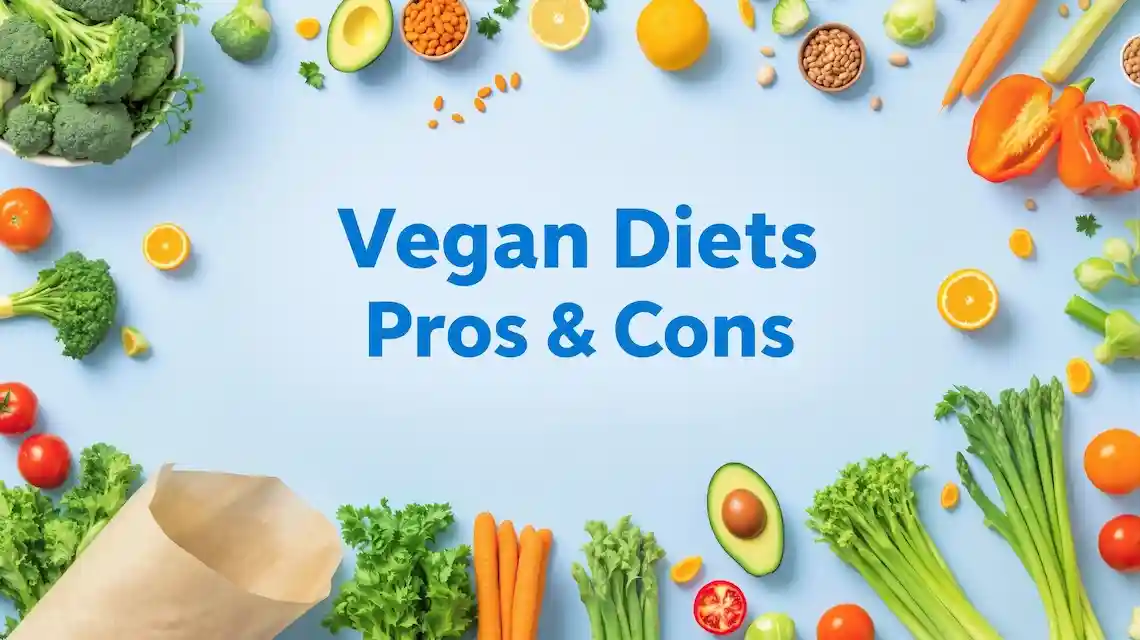
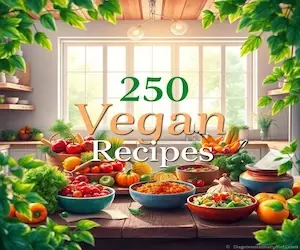
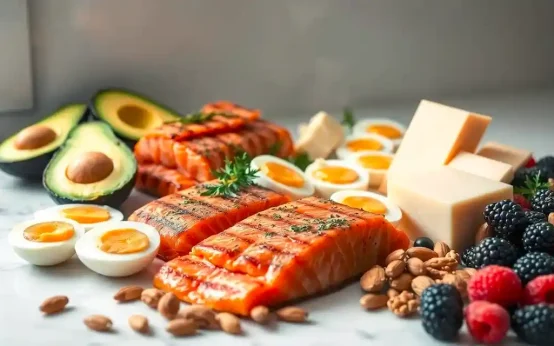 The Best Food for the Keto Diet
The Best Food for the Keto Diet  Can You Lose Weight on Carnivore Diet?
Can You Lose Weight on Carnivore Diet?  High Protein Meal Prep Ideas for the Week
High Protein Meal Prep Ideas for the Week  Eating During Winter to Maintain Muscle Mass
Eating During Winter to Maintain Muscle Mass 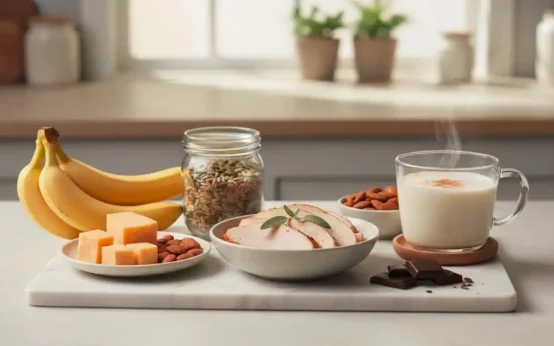 Tryptophan Snacks for Intermittent Fasting
Tryptophan Snacks for Intermittent Fasting 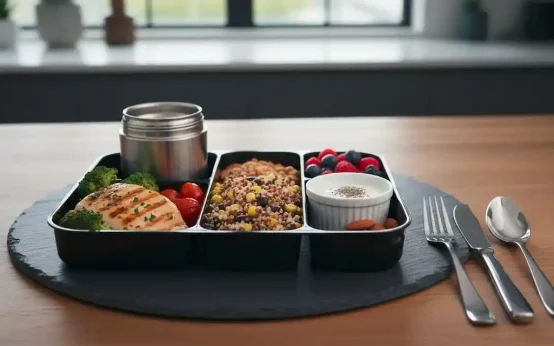 How to Eat In Portion Control
How to Eat In Portion Control